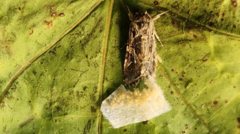A recent groundbreaking study conducted by a team at Tel Aviv University has unveiled an intriguing aspect of nature: animals can react to sounds made by plants, hinting at a potentially intricate ecosystem connection. The research focused on female moths that were shown to avoid laying their eggs on tomato plants that emitted sounds indicative of distress, suggesting that they perceive these signals as indicators of plant health.
In a significant discovery, two years ago, scientists already demonstrated that distressed or unhealthy plants produce sounds that are inaudible to human ears but can be detected by various insects, bats, and certain mammals. Professor Yossi Yovel from Tel Aviv University stated, "This is the first demonstration ever of an animal responding to sounds produced by a plant,” hinting at the potential broader implications of sound-based interactions in nature.
The researchers conducted a series of highly controlled experiments to ensure that the response of the moths was genuinely due to the auditory signals from the plants and not their physical appearance. The findings pave the way for additional investigations into how different plant species communicate through sound and whether other animals might also use these signals to inform their behaviors—be it pollination or seeking shelter.
Another intriguing area for future exploration highlighted by Professor Lilach Hadany is whether plants can use sound to communicate distress signals to one another, enabling them to adapt their behaviors, such as conserving water during droughts. “If a plant is stressed, the organism most concerned about it is other plants, and they can respond in many ways,” she shared with BBC News.
It's important to note that while plants produce these sounds, they are not sentient beings and do not have consciousness; the sounds result from physical changes triggered by local environmental conditions. This study indicates a fascinating evolutionary interplay where both plants and animals may have developed the ability to produce and detect these sounds, enhancing mutual survival.
The experiments focused primarily on female moths, known for laying their eggs on tomato plants, as their larvae depend on these plants for sustenance once hatched. The critical question the researchers aimed to answer was whether these moths would be deterred from laying eggs on plants signaling distress. The results showed a clear avoidance on the moths' part when the plant emitted stress sounds.
This important research has been published in the journal eLife, opening new vistas for understanding the rich and often hidden interactions that comprise our ecosystems.






















